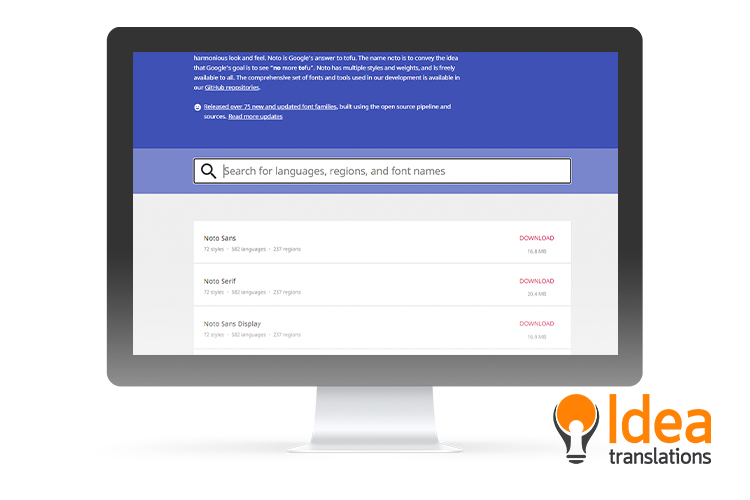
A Website that Speaks to your Audience
In these digital times, it is often said that a website is a company’s storefront; translating it into several languages is a strategic decision to attract customers.
For companies and organizations with branches in several countries —or those seeking regional or global expansion— a multi-language website is vital to boost sales opportunities and foster engagement with people who are interested in our products or services.
In that sense, there are many questions to ask before we start embarking on this kind of projects: Which are the most popular global languages? Which are the most popular languages on the Internet? Which are the languages more frequently translated online? And, more importantly: What is the language of the people with whom we want to share our messages, that is, our buyer personas?
According to a study by Mentalfloss, there are more than 7,000 languages worldwide, but only 23 of them are the native language of half the world’s population. For example, we know that English is the most spoken language in terms of number of global speakers, if we consider both native and non-native speakers.
However, if we consider only native speakers, Mandarin Chinese is the most popular language with 921,000,000 speakers, followed by Spanish (471,000,000) and English (370,000,000), according to Ethnologue, Languages of the World.
Spanish, for example, is a key language in markets like the United States. According to US Census Bureau estimates, the Hispanic population in 2019 was over 62.3 million, that is, almost 12 million people more than in 2010.
A Successful Website: Challenges and Complexities
From this data, and considering each company’s intent and needs, we can safely conclude that holistic translation services specialists are the best partners to tackle this challenge.
Both simple websites and those rich in hyper-specific technical content need their translation to be accurate and professional, taking into account the individual complexities and using relevant tools.
Beyond the difficulties posed by format, language and material, there are three options to translate a website:
- Simple Translation: This service consists of translating the content “as is” and simply pasting it on a new website.
- Professional Translation: Perfect for intermediate level sites; this service includes both text and design customization.
- Highly Complex Translation: This solution addresses dynamic sites and requires the participation of interdisciplinary specialists, like linguists, graphic designers, localization engineers, programmers, etc.
Holistic translation services also offer two options for websites:
- Working directly on the company’s content management system (CMS), or
- On their own proxy server. In this case, and thanks to the unique proxy approach, the translation of web content is done almost in real time, without additional project management or information technology costs.
What Do Experts Recommend?
Translating a website is not a linear task: there’s a lot to juggle and plan for. First of all, we need to consider the source text carefully to determine into what languages we are going to translate. Another key aspect is Search Engine Optimization (SEO), to ensure the content is not only accurate, but also visible by the various search engines.
Around 40% of Internet users would not buy online from websites in a foreign language and 76% of customers prefer to read product information in their native language.
Source: CSA Research
Thus, holistic translation companies contribute their expertise and vision to improve the decision-making process and save costs, developing websites that improve our customers’ online experience no matter their language.
Increasing global brand visibility is very positive for business, but it requires interesting content that promotes trust and encourages the audience to engage with the company, regardless of where they live or what language they speak. The key to success is growing your reputation and the company’s projection in the digital world, so that potential customers are able to find you.
Website translation services not only help us transcend language barriers in an increasingly complex and interconnected context: they also allow us to set foot in new markets beyond our borders. Multidisciplinary expertise is the key to dramatically improving our strategy, and a holistic translation service may be the key to business growth.



